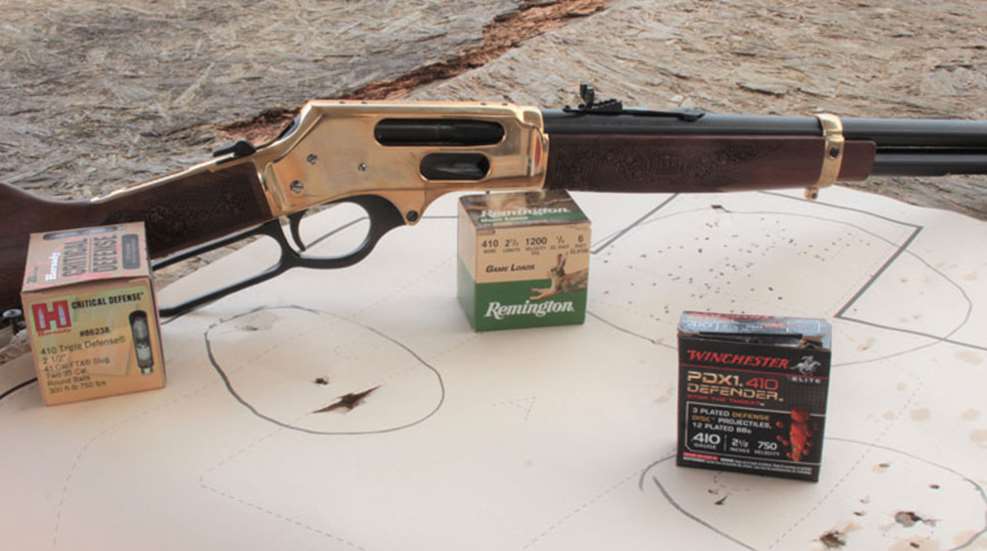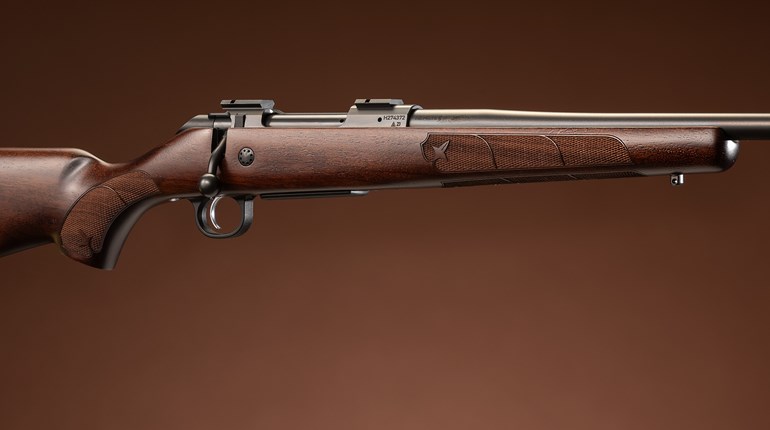
Earlier this year Henry Repeating Arms released their X series of rifles and shotguns, designed as a tactical alternative to their classic wood-clad cowboy guns. Among initial chamberings sat the .410 bore, and it really got me wondering if that would be enough to stop an intruder. As I wasn’t as familiar with the cartridge as I was 12 gauge and 20 gauge, I decided to round up some popular defensive loads, break out the calculator and investigate.
I was a bit too early on my inquisition to acquire a new Henry X, as they were still finishing their first production run. However, I did have one of their H024 side-gate .410 shotguns handy, so that would certainly do the trick. I sort of liked the idea of assigning double-duty to my favorite squirrel slayer, so why not see how it performs for home defense? I admit, it is a little too pretty to wind up in an evidence locker, but nonetheless if it is to be called upon to save my life or the lives of loved ones I might as well see what it is capable of.
With lever-action shotgun in hand, I gathered up a resetting popper as well as a paper IPSC target. This was going to be a two-gun endeavor, so I also tossed my Canik SC 9mm pistol with a box of 124-gr. ammo in the car. Upon arrival, I set up the paper at a distance of 7 yards to represent a typical defensive distance. I placed our steel target about 15 yards behind it to use as an energy transfer indicator. This particular target sits on a spring-loaded base. When it is struck, it will tip back momentarily before the spring returns it back to its vertical “home” position. Essentially, we were going to use this target to compare downrange energies across all three loads. (Ain’t science cool, kiddies?)
Before we even uncased the shotgun we centered a few pistol rounds on the distant steel target to establish some sort of baseline. The target swung about halfway through its range of motion when struck with the 9mm rounds, which we later figured had 370 ft./lbs. of energy when they left the muzzle. Next, we hit it with some Hornady Triple Defense ammo from the company’s Critical Defense line. This shell is loaded with one .41-caliber FTX slug with two .35-caliber lead balls behind it (ouch). The target had nearly the same reaction with that as when it was struck with the 9mm, probably because this load generated a similar energy of 306 ft./lbs. Almost every time all three projectiles flew tight enough to land on the target.
While we were calculating force, we decided to see what good ol’ fashioned game loads put out—and were quite surprised to see that Remington’s #6 shotshells delivered a whopping 700 ft./lbs. of energy. That’s more than a .45 ACP at the muzzle! The bad news is that number quickly degrades with every foot of distance traveled, and dips dramatically when only a fraction of that payload hits the target. That was easily observed when we engaged our 20-yard popper and couldn’t even hear the report of the steel. Wrapping things up, we sent some of the Winchester PDX1 Defender ammunition downrange. After crunching the numbers we determined these rounds to yield 393 ft./lbs of stopping power, and it was quite evident as they knocked our steel back so hard that it rebounded and landed face down.
Of course, the stopping power of a shotgun is largely based on how many pellets hit your target. A wide pattern might represent too much energy loss to still be effective against a threat.
In an effort to pattern these different rounds for defensive use, we turned to our paper target and saw exactly what 7 yards’ worth of distance did to them. Without much surprise, we measured an average spread of 8 inches from the Remington Game Loads out of our unchoked lever gun. This “might” be effective on a human threat, but it wouldn’t be my recommendation because it likely doesn’t have much energy left at this point.
The PDX ammo held its 3 disks and 12 plated BBs very tightly, with an average group of only 3.75 inches. The Hornady Critical Defense rounds were also more than adequate, with groups in the 5.25-inch neighborhood.
After doing the math and actually shooting some defensive .410 on steel I had some concrete evidence that not only is 20 gauge sufficient for stopping an intruder, but even the lowly “lipstick cartridge” will take care of business when the chips are down.
A lever-action emergency firearm has a lot of little perks as well, such as a fast, smooth action that allows you to keep your face on the stock as you chamber a fresh round—and it is certainly quieter than many other options out there. Not to mention there’s a far less chance of over-penetration with this lighter load. With the right ammunition, this little scattergun can absolutely put a hurtin’ on whatever is trying to hurt you. At the risk of sounding a little campy… “I sure wouldn’t want to get in front of one.”






































